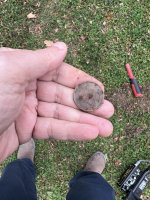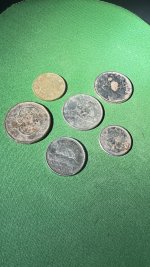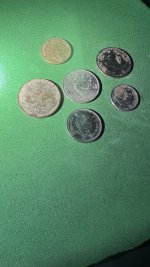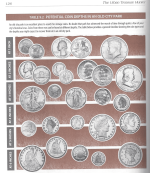metalman2024
Jr. Member
- Oct 28, 2024
- 25
- 69
- Detector(s) used
- Whites GMT
Fisher F-Pulse pinpointer
Garrett Ace 300i
- Primary Interest:
- Metal Detecting
Metal detecting a park not too far from 19th century buildings did not yield 19th century coins unfortunately. All within 3" to 4" of the top of the turf. I seem to dig only the ones that register on my pin-pointer.
I suppose there were two targets that made my GMT detector hum but did not register on my pin-pointer I should have dug them out but did not. They might've been the 19th century coins I was after.
But not a bad bunch of 5 Canadian modern coins and one Chinese coin I think.
I suppose there were two targets that made my GMT detector hum but did not register on my pin-pointer I should have dug them out but did not. They might've been the 19th century coins I was after.
But not a bad bunch of 5 Canadian modern coins and one Chinese coin I think.
Attachments
Upvote
18






 are you doing to the park with an 8" hole and similarly deep" factor and the 3) what-if just aluminum/bottle cap 🍬factor after all that work factor? If you multiply the 3 together, giving each factor my approximate weighting score, say, 30% x 50% x 10% , I got 1.5% encouragement to dig! ; ), I just got to find me more promising and secluded areas that do not have a lot of trash!! It just might be a tall order! The research involved appears daunting.
are you doing to the park with an 8" hole and similarly deep" factor and the 3) what-if just aluminum/bottle cap 🍬factor after all that work factor? If you multiply the 3 together, giving each factor my approximate weighting score, say, 30% x 50% x 10% , I got 1.5% encouragement to dig! ; ), I just got to find me more promising and secluded areas that do not have a lot of trash!! It just might be a tall order! The research involved appears daunting.






